#Edward Roland
Explore tagged Tumblr posts
Text
i don’t know how i’m feeling right now, im reeling. the amount of lore that i just ingested from the first call of cthulhu game that ties to malevolent is making my brain explode
#frank underhill#henry macfarland#jarrett coombs#malevolent podcast#malevolent#edward mason#the invictus steam podcast#bless this baby stanczyk means a lot more to me now than i ever thought it would#call of cthulhu#CoC game 1#roland cummings
24 notes
·
View notes
Text
And Roland's there
#halo#halo shitpost#halo 3 odst#halo dutch#halo romeo#sergeant johnson#halo vergil#the rookie#jonathan doherty#edward buck#roland the ai#veronica dare#halo mickey#video post
168 notes
·
View notes
Text


So, because I can never really leave well enough alone, I find myself constantly tweeking and updating designs if I let them sit too long and my muse gets on a story. In this case, the victim is The Hero’s Party, which does make sense, since I’m still in the planning stages of the story and am constantly tweeking and updating ideas.
I didn’t change too much about the first set other than a few changes here and there, but it’s just enough that I want to show it off and stare at how sparkly everyone looks, lol.
So first we have the main character whose biggest change is that I changed her name. She’s now Olivia Rosenberg, most commonly known as Livy to those closest to her. I keep trying to change her outfit, but end up going back to what I have here, because it’s, well, fairly perfect. She looks cute, and I think the bolder red looks really good with her pale skin.
Next we have the hero, Kallum Siegel. I decided that I wanted to give him the half cloak thing because it makes him look ~*~heroic~*~ and stuff, and because of that, he had to lose the hood. But that’s fine, because he looks, well, like a hero, lol.
Next we have Artemisia Megalos, who originally was Best Girl and now made into Even Better Girl somehow, lol. She looked great before, but I decided to see what would happen if I have her shorts and thigh highs instead, and then it felt like she needed something covering most of her chest, so I gave her a Mandurian collar thing, and just..*chef’s kiss* I love her so much it’s crazy.
Then we have Eli Greenleaf who has not changed one bit from when I first designed him, lol. He looks great, so there was really no point to, I guess.
The same with Gwendolyn Meindl, at least as far as the minor tweeks I did to her last time. (I was going to try to give her a not German last name because she’s a witch and all and they have a different culture like the elves, but then I figured witches are still technically humans and subjects of the kingdom, so they would have originally been given similar surnames, so…yeah.)
I think the biggest change to these characters is to Xander Kreuger. I decided to go ahead and give him more animalist parts, and I had already decided when I created him that his father had been a wolf type beast man. So now he gets wolf ears and a wolf tail, lol, as well as a tweek to his hairstyle in order to hide his lack of people ears. (This also means that the beast people are anthropomorphic versions of their animals, and that Xander’s father is an actual wolf, and its best not to think about how he came to be, lol. Half beastmen like him are rare, because people fear beastmen for the most part, but it does happen, and, yeah, they don’t think too much about it, either.)
The next set of designs are where it’s important, since I added and changed a lot of things.
The first design there is how Olivia looks at the beginning of her journey to show off the contrast of what the party does to her once she joins. Livy is 100% the victim of being the middle child, but she doesn’t think too much about it. By this point, their family is struggling, and she understands that she gets the leftovers of everything because a) her brother is the only boy so he gets the best of everything just based on being the heir and b) her sister gets doting on more because of her higher magical level. This is what she considers her best outfit, sadly, and it doesn’t look bad, but its old and faded and not all that great. But somehow, she’s still cute?
Next we have Olivia’s younger twin sister, Alicia Rosenberg. Previously, I had made her out to be a bit of a narcissistic bitch who tormented Livy, but have slowly whittled her down to being a caring sister who just happens to be their parents’ favorite because of her level. Twins, for the most part, typically average out with their levels, with most normal people being born with a level of around ten or so. But since it’s an average level, sometimes one twin is a lot higher than the other, which is what happened with Alicia and Livy. Livy has a level of five and Alicia has a level of fifteen, which is considered very high for a normal person. As such, their parents had high hopes for their youngest and expect her to marry into a prestigious family or something.
Alicia now is a sweet girl who loves her sister, but she also recently contracted a rare disease. She’s fine at the moment, but it’s a disease that’ll progressively get worse until she ends up dying a very painful death, which is what kick starts Livy’s quest to find the cure, which is this even rarer plant. Alicia is actually the sort of girl who would give Livy the clothes off her back, except Alicia is shorter and thicker than Livy is, so none of her clothes fit her. But I like how she turned out. Her new dress is adorable, and I amused myself with the idea that the first sister has one braid and the second sister has two braids. But she looks sweet, and I like it.
The next one is a new character and the older brother of Livy and Alicia, Edward Rosenberg. Originally, he was the main tormentor of Livy, but since I can’t really write about the main character having a trash family, he because something of her protector. (Their parents are still trash, but because of that, the siblings stick together.) He’s trying his best to keep things together after his parents dragged them out of their hometown and pretty much made it difficult to return. Livy sort of pities Edward because he was forced to leave his fiancée behind, and he definitely has his own shit going on most of the time. I do like how he turned out/
The next is Charlotte Solentis, the princess of the kingdom. She hasn’t changed at all, because I love her design a lot. A lot a lot.
The last one is a completely new character I came up with a few days ago, Roland Baumer. He’s a character the party runs into occasionally, and he’s basically the fake Hero. No one’s actually aware that Kallum is the hero, which is why it takes Livy by surprise when she runs into him, so Roland goes around proclaiming that he’s the hero. And because his level is so high, people believe him. He lacks the divine power Kallum has, though. He somehow falls for Livy upon their first meeting, and badgers her constantly whenever they met. Which you would think was just so I could make Kallum jealous and all, which he is at first, but Livy despises Roland, which Kallum absolutely loves. Roland is a pompous ass and no one in the Party can stand him.
I like his design, because I was trying to sort of make him opposite of Kallum, for obvious reasons. I didn’t really mean to make him monochrome, but I didn’t think putting him in all black like I had intended would really work, and somehow the greys do. I like how he turned out, because he looks self-important, lol.
Hopefully I’m done tweeking designs (I’m probably not), because these all look really good and I’m happy with them all. So shiny. :D
#my characters#my designs#my stories#the hero's part#olivia#kallum#artemisia#eli#gwendolyn#xander#alicia#edward#charotte#roland
2 notes
·
View notes
Text
His range need to be study.

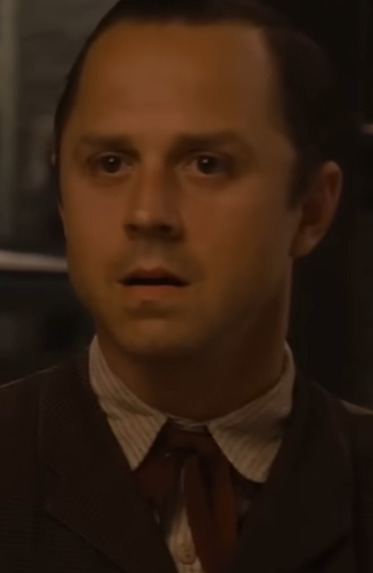

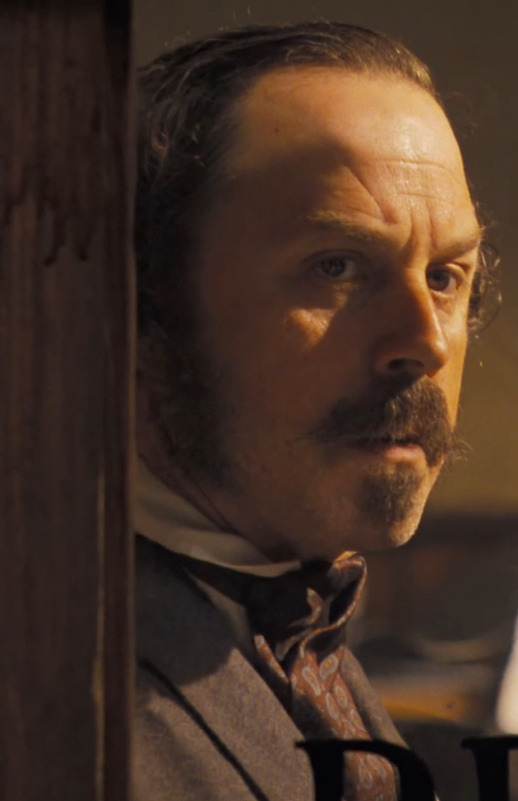
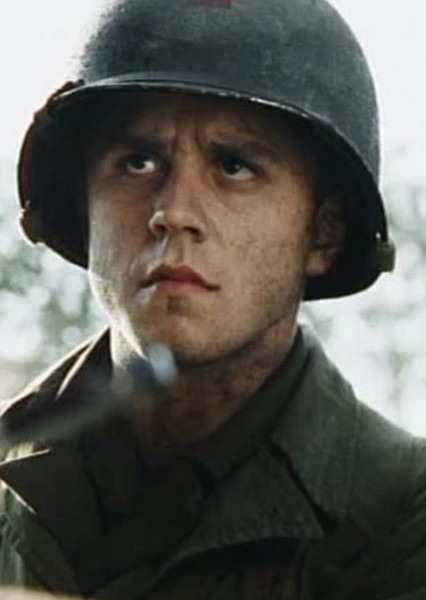


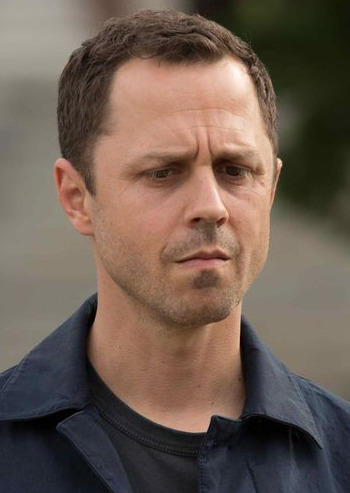
#giovanni ribisi#parker selfridge#edward#roland bailey#A Million Ways to Die in the West#avatar#horizon#horizon: an american saga#sneaky pete#gangster squad
3 notes
·
View notes
Photo

#anonymous#rhys ifans#vanessa redgrave#joely richardson#david thewlis#xavier samuel#sebastian armesto#rafe spall#edward hogg#jamie campbell bower#derek jacobi#roland emmerich#2011
9 notes
·
View notes
Text
'By now, you’ve no doubt seen Christopher Nolan’s masterpiece about the life of J Robert Oppenheimer, the American theoretical physicist who was responsible for developing the first atomic bomb, as part of the Manhattan Project. Not only has it been a box office smash hit, but it has also attracted rave reviews from critics falling over themselves to praise Nolan’s combination of cerebral insight and pulse-racing thrills.
Yet, inevitably, Hollywood and factual accuracy always make uneasy companions. Although Nolan is an unusually exacting and conscientious filmmaker – and Oppenheimer is based on Kai Bird and Martin J. Sherwin’s Pulitzer Prize-winning biography of the physicist, American Prometheus – there have already been grumblings and suggestions that some of the film’s most eye-catching and striking moments and scenes have been invented. But which ones display cinematic licence, and which ones are based – however incredibly – on fact?
Did Oppenheimer really poison his tutor’s apple? Early on, there is a striking scene in which a young Oppenheimer, then a student at Cambridge, injects the professor Patrick Blackett’s apple with cyanide, in a fit of fury after Blackett causes him to miss part of a lecture by Niels Bohr (who later became a mentor of sorts to the physicist). It’s a striking scene – and bears a coincidental resemblance to the death of another brilliant, troubled man, Alan Turing, who died after supposedly eating a cyanide-laced apple. But according to Oppenheimer’s grandson Charles, it’s pure invention.
“The part I like the least is this poison apple reference,” he told Time. If you read American Prometheus carefully enough, the authors say, ‘We don’t really know if it happened… There’s no record of him trying to kill somebody.’ That’s a really serious accusation and it’s historical revision. There’s not a single enemy or friend of Robert Oppenheimer who heard that during his life and considered it to be true.”
Yet both American Prometheus and Raymond J Monk’s 2012 biography of Oppenheimer suggest that the incident occurred. As Monk writes: “In what looks like an attempt to murder his tutor, or at the very least to make him seriously ill, Oppenheimer left on Blackett’s desk an apple poisoned with toxic chemicals”. The author notes that it became part of the Oppenheimer myth: “The incident was hushed up at the time, and none of his friends knew about it until they were told of it by Oppenheimer himself, usually in some more or less misleading version. That his feelings toward Blackett mixed fervent admiration with fierce jealously, however, was obvious to those who knew him well.”
Monk suggests that, somehow, his actions were discovered, but he was allowed to continue his studies in exchange for agreeing to be seen by a psychiatrist on Harley Street. Had he been expelled from Cambridge, or imprisoned, then a seismic career would have been curtailed before it began.
One moment in the film, however, is pure cinematic invention, according to Monk. “I think we can be fairly sure that Niels Bohr did not pick up the apple and that Oppenheimer did not smack it out of his hand,” he says. Even Nolan is not immune from the temptation of fabrication for its own sake.
Was Jean Tatlock murdered? One of Oppenheimer’s most intriguing characters is Florence Pugh’s Jean Tatlock, a Communist Party member who was romantically involved with Oppenheimer before, and during, his marriage to Kitty. Although she is only in the film for a relatively short time, she makes a substantial impression – not least in the depiction of her suicide in January 1944, when, under surveillance by the FBI for her political sympathies and suffering from clinical depression, she took barbiturates and drowned herself in the bathtub.
The presence of a suicide note – “I think I would have been a liability all my life – at least I could take away the burden of a paralyzed soul from a fighting world,” it read in part – seemed to make it clear that she wished for her own end, and the inquest recorded a verdict of suicide, motive unknown.
However, Nolan provocatively includes a scene – depicted as a vision, or fantasy, of Oppenheimer’s – of a gloved hand, belonging to an unknown person, pushing Jean’s head under the water. This might be seen simply as artistic licence, were it not for the fact that this alludes to a well-known conspiracy theory suggesting that Jean’s political views, and involvement with the director of the Manhattan Project, made her dangerous, and therefore expendable to the greater good.
This theory has been bolstered by the fact that her body contained chloral hydrate when she died; combined with barbiturates, this meant that she had what might be called a ‘Mickey Finn’ in her system – a non-fatal dose of drugs that would immobilise her, before she was forcibly drowned. As American Prometheus records one doctor saying: “If you were clever and wanted to kill someone, this is the way to do it.”
The release of Nolan’s film has overshadowed an earlier picture on the same subject, Roland Joffe’s Fat Man and Little Boy, but that film’s co-screenwriter Bruce Robinson – best known for writing and directing the seminal Withnail and I – became convinced that Tatlock had been murdered, and that the public records of her autopsy were, in his words “an inadequate invention”.
As Robinson said to the writer Alistair Owen in his collection of interviews Smoking in Bed: “Piece by piece we get to the point where, had I been the cop I would have made the arrest. The G2/FBI people had her murdered. They gave her chloral hydrate to knock her out, slung her in the bathtub, faked a note, and within a day or two – because her father was a very prominent man in the Berkeley area – there are newspaper reports talking about Jean Tatlock’s suicide.”
Whatever the truth behind Tatlock’s death, Nolan’s film undeniably hints at a larger story than just a tragic self-inflicted demise – and undoubtedly will lead others to ask questions again, too.
Could the Trinity test really have ended the world? Tatlock’s interest in the poetry of John Donne inspired Oppenheimer to name the first atomic bomb test ‘Trinity’, after Donne’s religious verse. Yet it was the fear of extinguishing the planet, rather than poetic contemplation, that leads Matt Damon’s General Groves to ask Oppenheimer in the film what the chances of global annihilation are. “Near zero,” the physicist replies. In one of the picture’s lighter moments, Groves’s horror at this revelation leads Oppenheimer to say “What do you want from theory alone?” The military man replies: “Zero would be nice.”
The “atmospheric ignition” scenario that the film suggests was a genuine fear of many scientists, including Oppenheimer’s colleague Edward Teller, who worried that the splitting of the atom would lead to a chain reaction that would destroy the world. But by the time the Trinity test took place, it was universally accepted that such a seismic occurrence was impossible.
As Richard Rhodes, author of The Making of the Atomic Bomb, commented to the Washington Post: “This thing has been blown out of proportion over the years. The question on the scientists’ minds before the test wasn’t, ‘Is it going to blow up the world?’ It was, ‘Is it going to work at all?’”
The conversation between Groves and Oppenheimer is therefore a moment of dramatic licence on Nolan’s part that effectively dramatises the concerns that the military – who were funding the operation – had, but the major worry was that of the test succeeding, rather than its causing the apocalypse.
Did Oppenheimer and Einstein’s final exchange happen? A recurring motif throughout the film, and one only fully explained at its climax, is an encounter between Einstein and Oppenheimer when the latter becomes a senior figure at Princeton, under the auspices of his future nemesis Lewis Strauss. The meeting between the two men – misinterpreted by Strauss, who self-aggrandisingly assumed that they were criticising him – shows a mournful Einstein suggesting that Oppenheimer’s invention of the atomic bomb could have destroyed the world, and Oppenheimer replying: “I believe we did.”
This is, of course, an invention of Nolan’s that elegantly portrays both the shared values and the differences between the two men. But they certainly knew each other in real life, first meeting in 1932 at the California Institute of Technology, and then working together at Princeton after the war, where Oppenheimer remained until 1966. The two men were respectful colleagues rather than intimate friends, and Bird and Sherwin suggest that the younger man saw Einstein “as a living patron saint of physics, not a working scientist.”
Nonetheless, Einstein respected Oppenheimer, calling him “an unusually capable man of many-sided education”, and later defended him when his security clearance was threatened, saying publicly that “I admire him not only as a scientist but also as a great human being” and privately that “the trouble with Oppenheimer is that he loves a woman who doesn’t love him—the United States government.”
Oppenheimer returned the compliment, saying in a lecture in 1965: “Einstein is also, and I think rightly, known as a man of very great goodwill and humanity. Indeed, if I had to think of a single word for his attitude towards human problems, I would pick the Sanskrit word Ahinsa, not to hurt, harmlessness.” Although Einstein had written a letter to President Roosevelt that had convinced him of the necessity of developing an atomic programme, he was never involved in the Manhattan Project, and believed ultimately in the power of science as something to create – rather than to destroy.
Did President Truman call Oppenheimer ‘a crybaby’? In one of Oppenheimer’s most effective scenes, President Truman – as played by Nolan regular Gary Oldman – meets the physicist, ostensibly to congratulate him for his work on the Manhattan Project. But when Oppenheimer shows contrition for his involvement in the project and suggests he has blood on his hands, Truman sardonically waves a handkerchief at him, before remarking, on Oppenheimer’s ejection from the Oval Office: “Don’t let that crybaby in here again.”
It seems almost on the nose, unlike much of the rest of the elegant script, but this is one instance where a dramatic confrontation is based on documented fact. Monk’s biographer attests to Truman referring to Oppenheimer as a “crybaby scientist” to his aides, and told his Secretary of State Dean Acheson that he never wished to see him again.
While this is contracted into one brief scene, with Oppenheimer overhearing his dismissal, it is nonetheless true that Truman was angered by the scientist’s principled objection. “Blood on his hands, dammit, he hasn’t half as much blood on his hands as I have,” he was recorded saying. “You just don’t go around bellyaching about it.”
Was Kyoto not bombed because a politician went on honeymoon there? In a moment that epitomises the mixture of horror and black comedy that defined much of the Manhattan Project, the US Secretary of War Henry Stimson, deciding where will be legitimate targets for the atomic bombs to be dropped, suggests that Kyoto should be spared, partly because of its cultural and historical significance to Japan – but also, Stimson says cheerfully, because he and his wife honeymooned there.
The line – which was suggested by James Remar, the actor who played Stimson – seems like the perfect encapsulation of institutional caprice. “It has this bureaucratic quality of a group of men discussing massive destruction and how they’re going to do these awful things.” Nolan has said. “And you’re suddenly seeing a human face to these negotiations.”
It is unclear whether Stimson went on honeymoon to Kyoto, let alone whether his personal affection for the city resulted in its near-arbitrary salvation. Yet it is documented fact that Stimson visited the city several times, when he served as Governor of the Philippines in the 1920s, and that he personally lobbied Truman not to bomb it. The President was in agreement with him, as Stimson recorded in his diary on July 24 1945. Truman, he wrote, “was particularly emphatic in agreeing with my suggestion that if elimination was not done, the bitterness which would be caused by such a wanton act might make it impossible during the long post-war period to reconcile the Japanese to us in that area rather than to the Russians”.
Yet others claim that, rather than Stimson or any other politician, the credit for saving Kyoto should instead go to the archaeologist and art historian Langdon Warner – one of the inspirations for Indiana Jones – who, in his role on the Monuments, Fine Arts and Archive section of the military, made a persuasive case against bombing Kyoto, along with Nara and Kamakura. To this end, monuments to Warner have been erected in Kyoto and Kamakura; a gesture of gratitude to a man who truly understood the awfulness of what would have happened if Japanese culture had been swept away by Oppenheimer’s invention.
Did Kitty testify on behalf of her husband at the security hearings? Emily Blunt’s presence in the majority of Oppenheimer is slightly perplexing; for a film revolving mostly around men, the A-list star is largely limited to domestic scenes at home that show both her alcoholism and frustration with being sidelined to her husband’s work. Yet she has a magnificent scene towards the end that will probably earn Blunt at least an Oscar nomination, when Kitty attends the security hearings and passionately both defends her husband and attacks their right to hold the quasi-kangaroo court that will eventually result in the withdrawal of his security clearance.
It’s largely drawn from the transcript of the hearings – as is much of this narrative thread – and shows Kitty as “forthright and unflustered”, as Bird and Sherwin suggest, and that “she acquitted herself easily, coolly and precisely answering each question.” Rubbishing the idea that her and her husband’s previous association with the Communist Party might make them security risks, Oppenheimer’s biographers conclude that “Kitty did not give an inch. Not even [Roger] Robb [the attorney cross-examining at the hearing] could touch her. Calm and yet alert to every nuance, she was undoubtedly a better witness than the husband she was defending.”
Did Oppenheimer really learn Dutch in six weeks? Early in the film, there is an amusing scene when Oppenheimer is about to give a lecture to a group of Dutch students. His colleague confidently expects that he will speak in English to widespread confusion, but instead Oppenheimer delivers a complex technical talk in fluent Dutch. When asked how long it took him to master the language, Oppenheimer replies “six weeks.”
This might seem like a piece of pure invention, designed to show off Oppenheimer’s savant-level brilliance, but it is entirely true; the physicist had a facility for mastering languages that enabled him to learn Dutch and Sanskrit in record time; reading the Bhagavad Gita in the latter was what led him to come out with his famous comment, after the success of the Trinity test, “Now I am become death, destroyer of worlds.” His friend Harold Cherniss paid tribute to his ability to get to grips with any intellectual challenge, saying: “When he became interested in anything, he very quickly picked up an enormous amount of knowledge about it.”
Did he follow a martini and cigarette diet? Cillian Murphy’s brilliant performance as Oppenheimer is due, in part, to the naturally slim actor’s weight loss, which makes him look as intensely gaunt as the real-life man. Oppenheimer himself was only 127 pounds (just over nine stone) and failed an Army medical because he was considered too underweight to become an officer. At his most extreme, during the activity of the Manhattan Project, Oppenheimer’s weight dropped to a mere 115 pounds.
Bird and Sherwin wrote that “his energy level never flagged, but he seemed to be literally disappearing little by little, day after day.” He may not literally have lived off cigarettes and martinis, as the film suggests, but food was increasingly secondary to the more immediate stimulation provided by nicotine and alcohol; as one of his neighbours observed, “My God, if the man ate a thousand calories a day it was a miracle.”
Did Kitty Oppenheimer refuse to shake Edward Teller’s hand? At the film’s conclusion, there is a powerful brief scene where, as an older and rehabilitated Oppenheimer is awarded the Femi Award at the White House, his friend-turned-Judas Edward Teller (who testified against him at the security hearings) offers his hand to shake. Oppenheimer does so, apparently without resentment or anger. But when Teller offers Kitty his hand in turn, she scowls furiously at him, and he withdraws it, abashed.
It might seem like a convenient piece of dramatic invention, but onlookers testified as to its accuracy, and offers confirmation – as if it were needed – that Kitty’s passion and anger were an invaluable foil to her husband’s cooler and more analytical temperament.'
#Oppenheimer#Kitty#Emily Blunt#Edward Teller#Enrico Fermi Award#American Prometheus#Kai Bird#Martin J. Sherwin#Christopher Nolan#The Manhattan Project#Patrick Blackett#Niels Bohr#Alan Turing#Raymond J. Monk#Jean Tatlock#Florence Pugh#Roland Joffe#Fat Man and Little Boy#John Donne#Leslie Groves#Matt Damon#Bruce Robinson#Withnail and I#James Remar#Henry Stimson#Cillian Murphy#Harold Cherniss#President Truman#Gary Oldman#Roger Robb
4 notes
·
View notes
Text
The essay which introduces these poems in Mercurius talks a little about how we try to build meanings or modes of expression up through layers of sometimes contradictory material that nonetheless seem relevant, perhaps because of their proximity as much as their appropriateness.
It cites the way the Labyrinth is represented as unicursal but treated as multicursal - maze-like. Maybe, like consciousness and especially dreams, we experience it (and such modes and meanings) as a laminate structure as much as a set of linear choices, that is, what we are amazed by is its layering of meanings - cultural, geographic, mythological, psychological - each one of which is not entirely obliterated by its successor.
This would make it more an unsuccessful palimpsest than a tabula rasa, in that those previously inscribed texts are almost obliterated, but our memory of them persists. Even with the complete erasure of the wax tablet, of course, the awareness of precedent or just its possibility persists. Perhaps collage describes the way in which such layers might appear to obscure each other but actually sit in juxtaposition.
So it sometimes seems even with movements as sticky as Surrealism - more a site of persistent, nagging modes of thought than a permanently proven or disproven hypothesis - though the more perfected among us are confident that, as we have moved beyond such movements’ cultural moments, so too we have dispensed with their artistic potentialities.
Those of us with low self esteem issues, however - none too confident that we would be part of that same ‘we’ who thinks such things anyway - continue plodding obsessively through those possibilities, peeling away the layers, and occasionally sticking them back down in different combinations.
That which obsesses us does so because we have not fathomed it, and so we go over it one more time. However, as Borges tells us, repetition is not exactly the same thing again: it is the same thing made different by being repeated. Being largely useless, our obsession is very likely either to be derived from or to lead to an error. And that which is repeated imperfectly may thereby be rendered perfectly new.
(Thanks to Vik Shirley for her encouragement in putting together these pieces.)

#Surrealism#Mercurius#The Labyrinth#Borges#Edward Lear#Crete#Apokaronas#Lee Miller#Nusch Eluard#Roland Penrose#Magritte#Collage#Vik Shirley
0 notes
Text

Photo credits: H. Armstrong Roberts
August from My Desk
Roland Flint
It is hot today, dry enough for cutting grain,
and I am drifting back to North Dakota
where butterflies are all gone brown with wheat dust.
And where some boy,
red-faced, sweating, chafed,
too young to be dying this way
steers a laborious, self-propelled combine,
and dreams of cities, and blizzards –
and airplanes.
With the white silk scarf of his sleeve
he shines and shines his goggles,
he checks his meters, checks his flaps,
screams contact at his dreamless father,
and, engines roaring,
he pulls back the stick
and hurtles into the sun.
"Reflections on a Gift of Watermelon Pickle... And Other Modern Verse" - compiled by Stephen Dunning, Edward Lueders, and Hugh Smith
#book quotes#poetry#reflections on a gift of watermelon pickle#stephen dunning#edward lueders#hugh smith#h armstrong roberts#august from my desk#roland flint#summer heat#grain#farming#harvest#north dakota#butterflies#brown#wheat#dust#sweating#chafed#steering#combine harvester#laborious#dreaming#cities#blizzards#airplanes#shining#goggles#systems check
0 notes
Text
i can't believe i don't have more than 24 hrs in a day to spend reading books
#reading an edward said essay and changing it to a gossip book abt classical musicians and then like a short horror stories#and then back to a young adult novel and then a roland barthes one and so on#likeee they r making me have a blast also owning a kindle changed my life
1 note
·
View note
Text
Congrats to the ultimate winner of the Hot & Vintage Movie Men Tournament, Mr. Toshiro Mifune! May he live happily and well where the sun always shines, enjoying the glories of a battle hard fought.
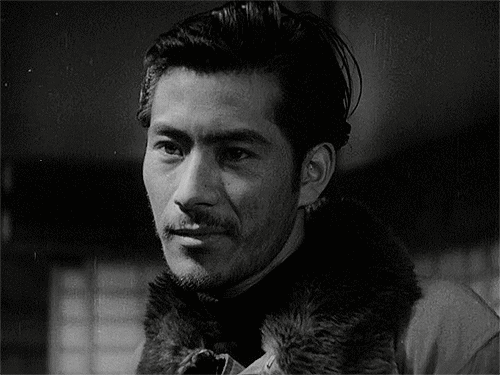
A loving farewell to all of our previous contestants, who are now banished to the shadow realm and all its dark joys and whispered horrors—I hear there's a picnic on the village green today. If you want to remember the fallen heroes, you can find them all beneath the cut.
What happens next? I'll be taking a break of two weeks to rest from this and prep for the Hot & Vintage Ladies Tournament. I'll still be around but only minimally, posting a few last odes to the hot men before transitioning into a little early ladies content, just like I did with this last tournament. The submission form for the Hot & Vintage Ladies tournament will remain up for one more week (closing February 21st), so get your submissions in for that asap! Once the form closes, there will be one more week of break. The first round of the Hot & Vintage Ladies Tournament will be posted on February 29th, as Leap Year Day seems like a fitting allusion to leaping into these ladies' arms.
Thanks for being here! Enjoy the two weeks off, and send me some great propaganda.
In order of the last round they survived—
ROUND ONE HOTTIES:
Richard Burton
Tony Curtis
Red Skelton
Keir Dullea
Jack Lemmon
Kirk Douglas
Marcello Mastroianni
Jean-Pierre Cassel
Robert Wagner
James Garner
James Coburn
Rex Harrison
George Chakiris
Dean Martin
Sean Connery
Tab Hunter
Howard Keel
James Mason
Steve McQueen
George Peppard
Elvis Presley
Rudolph Valentino
Joseph Schildkraut
Ray Milland
Claude Rains
John Wayne
William Holden
Douglas Fairbanks Sr.
Harold Lloyd
Charlie Chaplin
John Gilbert
Ramon Novarro
Slim Thompson
John Barrymore
Edward G. Robinson
William Powell
Leslie Howard
Peter Lawford
Mel Ferrer
Joseph Cotten
Keye Luke
Ivan Mosjoukine
Spencer Tracy
Felix Bressart
Ronald Reagan (here to be dunked on)
Peter Lorre
Bob Hope
Paul Muni
Cornel Wilde
John Garfield
Cantinflas
Henry Fonda
Robert Mitchum
Van Johnson
José Ferrer
Robert Preston
Jack Benny
Fredric March
Gene Autry
Alec Guinness
Fayard Nicholas
Ray Bolger
Orson Welles
Mickey Rooney
Glenn Ford
James Cagney
ROUND TWO SWOONERS:
Dick Van Dyke
James Edwards
Sammy Davis Jr.
Alain Delon
Peter O'Toole
Robert Redford
Charlton Heston
Cesar Romero
Noble Johnson
Lex Barker
David Niven
Robert Earl Jones
Turhan Bey
Bela Lugosi
Donald O'Connor
Carman Newsome
Oscar Micheaux
Benson Fong
Clint Eastwood
Sabu Dastagir
Rex Ingram
Burt Lancaster
Paul Newman
Montgomery Clift
Fred Astaire
Boris Karloff
Gilbert Roland
Peter Cushing
Frank Sinatra
Harold Nicholas
Guy Madison
Danny Kaye
John Carradine
Ricardo Montalbán
Bing Crosby
ROUND THREE SMOKESHOWS:
Marlon Brando
Anthony Perkins
Michael Redgrave
Gary Cooper
Conrad Veidt
Ronald Colman
Rock Hudson
Basil Rathbone
Laurence Olivier
Christopher Plummer
Johnny Weismuller
Clark Gable
Fernando Lamas
Errol Flynn
Tyrone Power
Humphrey Bogart
ROUND 4 STUNGUNS:
James Dean
Cary Grant
Gregory Peck
Sessue Hayakawa
Harry Belafonte
James Stewart
Gene Kelly
Peter Falk
QUARTERFINALIST VOLCANIC TOWERS OF LUST:
Jeremy Brett
Vincent Price
James Shigeta
Buster Keaton
SEMIFINALIST SUPERMEN:
Omar Sharif
Paul Robeson
FINALIST FANTASIES:
Sidney Poitier
Toshiro Mifune
and ok, sure, here's the shadow-bracket-style winner's portrait of Toshiro Mifune.

#hotvintagepoll#hot men finals#a winner crowned!#fuck that old man (requiem)#shadow bracket#toshiro mifune
4K notes
·
View notes
Text
~ A little about my blog ~
‘What eyes, I wondered, might be watching.’ — An Ode to Antares — Alan Seeger
Ever since I first read Alan Seeger’s poetry and his published diary pages, I was hooked on poetry and was inspired to write my first poem and subsequent ones after, from the beginning of reading his words on the page. His work as well as many other works of the Lost Generation nurtured my want to learn poetry, and I began a whirlwind tour of the world of spoken word. Years later I’d come to find my own voice in poetry and write my own poetry and prose to voice the injustice I saw around me. Over the years, I’ve found my own style of writing, yes, but when I think about it, I always return to the moment I fell in love with the idea of poetry and what it meant to me, and what it means now. Thanks to Alan Seeger. Looking back, I’ll always remember reading Tithonus, at age Twelve, and being drawn into his words. I even have a first edition of Alan Seeger’s poetry and it is one of my prized possessions, since his words and story mean so much to me, his writing having inspired me to take one of the best journeys in my life. At first this blog was just a starting point to voice my thoughts on the subject of war poets, but as I went, I decided to create this blog with the intent to write about Alan Seeger’s life and poetry, along with many others who went through the same and have only poetry and not much else known about their stories.

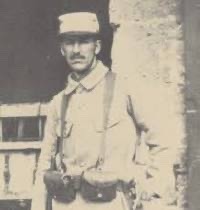
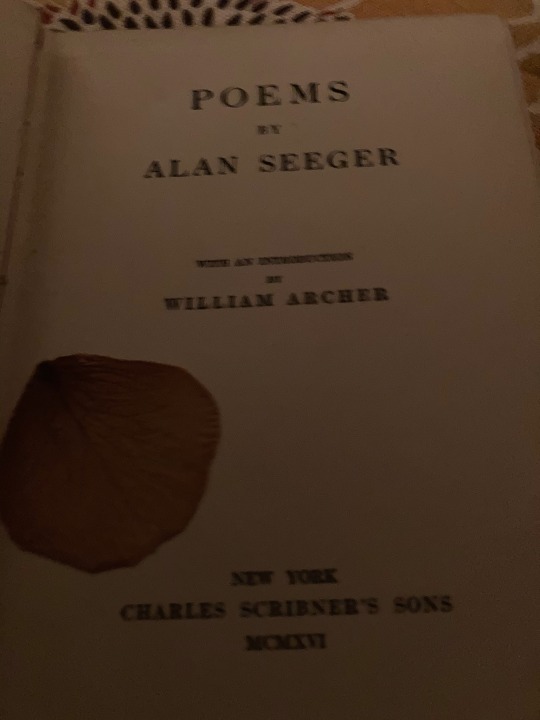



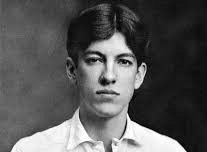
#alan seeger#wwi war poets#poetry#poetic#poets corner#world war one#thank you Alan Seeger Vera Brittain Wilfred Owens Siegfried Sassoon and many more poets for teaching me how to find my voice#edmund blunden#edward thomas#vera brittain#roland leighton#isaac rosenberg#charles shorley#william hodgson#siegfried sassoon
1 note
·
View note
Text
Masterpost of Hot Old Man Round 1 Polls
Paul Newman v Richard Burton
Omar Sharif v Tony Curtis
Red Skelton v Burt Lancaster
Christopher Plummer v Keir Dullea
Anthony Perkins vJack Lemmon
Kirk Douglas v Alain Delon
James Dean v Marcello Mastroianni
Harry Belafonte v Jean-Pierre Cassel
Marlon Brando v Robert Wagner
Sammy Davis Jr. v James Garner
James Coburn v Rock Hudson
Peter Cushing v Rex Harrison
George Chakiris v Sidney Poitier
Dean Martin v Sean Connery v Jeremy Brett
Tab Hunter v Toshiro Mifune
Howard Keel v Peter O'Toole
Robert Redford v James Mason
Steve McQueen v Charlton Heston
Dick Van Dyke v George Peppard
Elvis Presley v Peter Falk
Oscar Micheaux v Rudolph Valentino
Joseph Schildkraut v Buster Keaton
Jimmy Stewart v Ray Milland
Cary Grant v Claude Rains
John Wayne v Errol Flynn
Clint Eastwood v William Holden
Douglas Fairbanks Sr. v Sessue Hayakawa
Carman Newsome v Harold Lloyd
Noble Johnson v Charlie Chaplin
John Gilbert v Conrad Veidt
Ramon Novarro v Robert Earl Jones
Slim Thompson v Gary Cooper
John Barrymore v Paul Robeson
Edward G. Robinson v Clark Gable
Humphrey Bogart v William Powell
Leslie Howard v Ronald Colman
Peter Lawford v Vincent Price
Harold Nicholas v Mel Ferrer
Joseph Cotten v Danny Kaye
John Carradine v Keye Luke
Ivan Mosjoukine v Gilbert Roland
Benson Fong v Spencer Tracy
Guy Madison v Felix Bressart
James Shigeta v Ronald Reagan
Montgomery Clift v Ricardo Montalbon
Peter Lorre v Frank Sinatra
Bob Hope v Gregory Peck
Fred Astaire v Paul Muni
Bela Lugosi v Cornel Wilde
Cesar Romero v John Garfield
Basil Rathbone v Cantinflas
Henry Fonda v Turhan Bey
Boris Karloff v Robert Mitchum
David Niven v Van Johnson
Gene Kelly v José Ferrer
Robert Preston v Tyrone Power
Jack Benny v Donald O'Connor
Fredric March v Lex Barker
Michael Redgrave v Gene Autry
James Edwards v Alec Guinness
Fayard Nicholas v Fernando Lamas
Ray Bolger v Johnny Weismuller
Orson Welles v Sabu Dastigir
Mickey Rooney v Laurence Olivier
Rex Ingram v Glenn Ford
Bing Crosby v James Cagney
@hotvintagepoll
384 notes
·
View notes
Text
fairy's fics for gaza
hello everyone! i'm not sure anyone would even be interested or care about this but i'm OPENING REQUESTS for @ficsforgaza !! by tossing my hat into the ring, i hope to help raise money and interest for this cause!
keep in mind i'll maybe close my requests if i get overwhelmed or can't fulfill a request. i am setting the donation limit for $5 for 500 words. ofc this is subject to change (e.g. you want a shorter or longer request)
how this works!
you (the reader): send me A DIRECT MESSAGE (not an ask pls, those are reserved for regular requests) asking for a request. i will start working on your request once you've provided proof to me (with any personal info removed) of your donation to a VETTED FUNDRAISER. DO NOT SEND ME THE MONEY
me (the writer): once i have vetted the fundraiser (there is a list to choose from HERE), i will begin work on your request. keep in mind i have other projects to get done (e.g. original stories, other requests still in my inbox, etc.) so it won't be published right away.
LIST OF FANDOMS/PEOPLE I'LL WRITE FOR (these are all x reader):
Arcane: League of Legends: Viktor, Silco, Jayce Talis, Vi, Vander, Caitlyn Kiramman, Mel Medarda
Bungou Stray Dogs: Nakajima Atsushi, Nakahara Chuuya, Dazai Osamu, Kunikida Doppo, Fukuzawa Yukichi, Saigiku Jouno, Suehiro Tecchou
The Case Study of Vanitas: Vanitas, Noé Archiviste, Roland Fortis, Dominique de Sade
Demon Slayer: All the Hashira, Akaza, Kokushibo, Douma, Kibutsuji Muzan, Kamado Tanjiro (aged up), Agatsuma Zenitsu (aged up), Hashibira Inosuke (aged up)
Doctor Who: The Doctor (9th, 10th, 11th, 12th), Jack Harkness, River Song
Fullmetal Alchemist: Roy Mustang, Greed, Riza Hawkeye, Jean Havoc, Envy, Alex Louis Armstrong, Olivier Armstrong, Edward Elric (post-FMAB), Alphonse Elric (post-FMAB), Ling Yao (post-FMAB)
Grimm (NBC): Nick Burkhardt, Hank Griffin, Sean Renard, Drew Wu, Monroe
Jujutsu Kaisen: Gojo Satoru, Fushiguro Toji, Geto Suguru, Nanami Kento, Itadori Yuuji (aged up), Fushiguro Megumi (aged up)
Moriarty the Patriot: William James Moriarty, Albert James Moriarty, Louis James Moriarty, Sherlock Holmes, Mycroft Holmes, Fred Porlock, Sebastian Moran, James Bonde
Tokyo Ghoul: Uta, Kaneki Ken, Kirishima Touka, Kirishima Ayato (re: age), Nishio Nishiki, Tsukiyama Shuu
GENERAL RULES
i write specifically SFW. no NSFW or dark content here folks. though there are plenty of participating authors who write either dark content or NSFW!
all writing is gender neutral but can be customized to a female!reader
absolutely no exclusionists welcome. that includes anyone who is or condones racism, sexism, homophobia, transphobia, aphobia, ableism, islamophobia, antisemitism, or anything similar.
things that WON'T be written: nsfw/smut/spice (implied or otherwise), abusive relationships, yandere, self-harm, suicide, eating disorders, mental disorders, incest, character x character, character x oc
if you have any further questions please let me know!! i've never done something like this and it's very probable i've left something unclear lol.
feel free to check out the BLOG for more information! they also have a FAQ here!
66 notes
·
View notes
Text
Because I like funny numbers (Blaseball I miss you) and whatever is happening over at @hotvintagepoll in the Paul Newman vs Christopher Plummer poll is hilarious, I had to take a look at the number of votes and it's so fucking funny. Most of the polls have like 5,000 votes. We're (as of about 7 pm est) at more than three times that many. Help.
Vote counts:
3,714 Bogart vs Crosby
3,471 Power vs Montalbán
2,936 Flynn vs Carradine
3,648 Lamas vs Kaye
3,331 Nicholas vs Gable vs Madison
5,931 Falk vs Sinatra
5,915 Kelly vs Cushing
2,793 Stewart vs Roland
5,295 Astaire vs Weismuller vs Karloff
5,355 Belafonte vs Clift
16,790 Newman vs Plummer
7,347 Lancaster vs Mifune
3,293 Olivier vs Ingram
3,387 Rathbone vs Dastagir
5,358 Eastwood vs Hudson
2,983 Coleman vs Fong
3,920 Veidt vs Micheaux
2,945 Cooper vs Newsome
11,656 O'Connor vs Price
5,411 Bey vs Lugosi vs Redgrave
4,149 Hayakawa vs Jones
5,103 Niven vs Robeson
4,599 Peck vs Barker
4,215 Johnson vs Keaton
4,379 Romero vs Grant
5,583 Brett vs Heston
6,583 Redford vs Poitier
4,826 Shiegeta vs O'Toole
5,700 Sharif vs Delon
5,162 Davis Jr vs Dean
5,516 Edwards vs Perkins
8,087 Brando vs Van Dyke
114 notes
·
View notes
Text
happy Masters of the Air release week. In honour of the series due to release on the 26th, I wanted to list a few faces we’ll be seeing throughout the series. I want to particularly note the crewmen of the 100th in hopes this makes sense to viewers who either a) didn’t have time to read any books based on the 100th bomb group, or b) want to read Masters of the Air by Donald L. Miller during/after the tv show aires. My lovely friend on tumblr @kylaym was happy to message me on instagram regarding who’s who for most of the 100th bomb group posts. She gets that everyone in uniform looks the same; same haircut, moustaches, masks, everywhere, etc. She mentioned it is always better to remember a bunch of lads as groups and crews than as individuals!
Here we gooo..
Colonel Neil “Chick” Harding
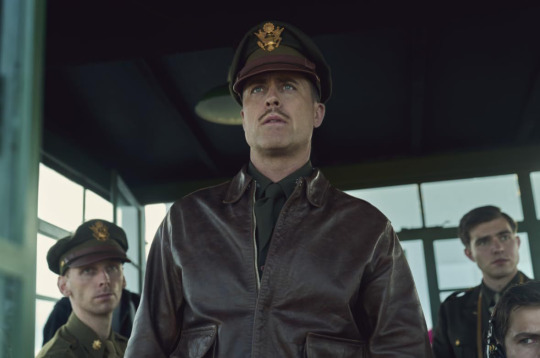
A West Point graduate and the school’s football coach prior to the war. Harding was a seasoned aviator who truly emulated much of the 100th’s attitude. He exhibited an appreciation for his crew’s mental and emotional well-being.
Major John C. “Bucky” Egan and Major Gale “Buck” Cleven
Two of the squadron commanders, Majors John “Bucky” Egan of the 418th Bomb Squadron and Gale “Buck” Cleven of the 350th, had piloting skills which matched their personalities. (Found top row 3rd and 4th members from left to right).

Captain John D. Brady
He served as a pilot in the 418th bomb squadron and was shot down during the mission to Munster on October 10th, 1943. (Shown here on the far left). He flew overseas in A/C #42-30071 “Skipper” as 1st Lt. Pilot. 2nd Lt’s being Lt. John L. Hoerr [Co-Pilot] and Lt. Harry Crosby [Group Navigator and Captain].
M/Sgt. Kenneth A. Lemmons
He served on the 351st Bomb Squadron and was one of the first crew chiefs assigned to the 100th Bomb Group. After being a part of the U.S. Air Force's ground crew, he was subsequently promoted to the position of flight chief. (Shown above in the front).
Harry H. Crosby
Harry served as a navigator in the 418th Bomb Squadron and later became Group Navigator for the Hundredth, however, his struggle with airsickness often hindered his ability to navigate. (Found above beside Brady on the right). Harry Crosby replaced Lt. Payne on the crew of Douglass.
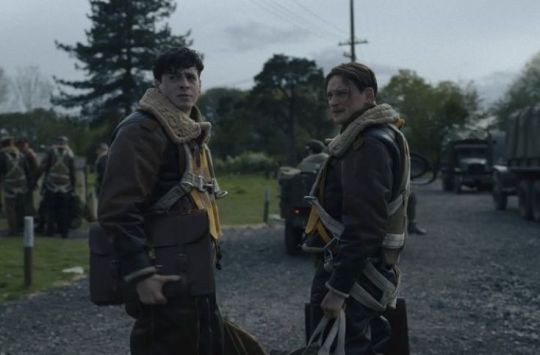
Payne is found above on the right, beside Harry Crosby.
Lt. Howard B. “Hambone” Hamilton
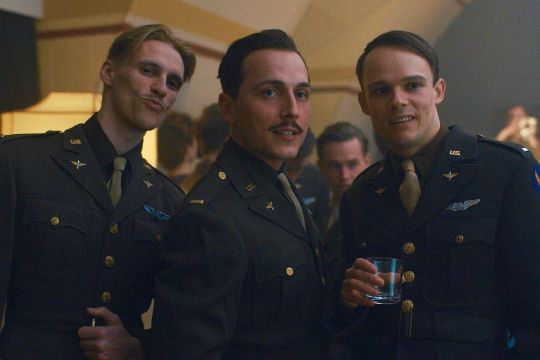
He was a bombardier mostly known for flying with Brady’s crew.
On the October 10th Munster mission, crew #32 was led by Major John C. Egan as Co-Pilot. Near the initial point “Mlle Zig Zig” was hit by Flak, resulting in the following:
- Sgt Clanton passing away
- wounding Howard Hamilton and Roland Gangwer. (Both ended up spending a long time in the hospital).
- the surviving crew members bailed out but were taken prisoner.
Hamilton is seen above on the far left. Beside him on the left is Lt. James Douglass and Captain Frank Murphy.

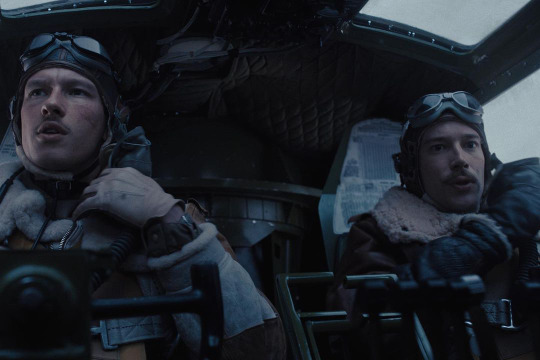
Captain James Douglass
Served as a bombardier in the 418th Bomb Squadron with the Everett Blakely crew. (Seen above in the first picture beside Blakely).
Major Everett E. Blakely
Was a career officer of the United States Air Force. He was a highly decorated pilot of the B-17 bomber with the Bloody Hundredth Bombardment Group of the 8th Air Force. He is most commonly known for his crew’s plane “Just a Snappin”. On a mission to Bremen on October 8th, 1943, his plane was severely damaged by flak and enemy fighters. He later became the Group Training Officer (Shown above on the right and next to Major John Egan in the second picture above).
Blakely’s Crew:
Major John Kidd- Command Pilot
1st Lt. Everett Blakely- Pilot
2nd Lt. Charles Via- Formation Officer in the tail (SWA on the mission during Black Week)
1st Lt. Harry Crosby - Navigator
2nd Lt. James Douglass - Bombadier
T/Sgt. Edmund Forkner - Radio operator
S/Sgt. William McClelland - Ball Turret Gunner (WIA on the Black Week mission)
S/Sgt. Edward Yevich - Waist Gunner (WIA on the Black Week mission)
S/Sgt. Lyle Nord - Waist Gunner
S/Sgt. Lester Saunders - Tail Gunner (KIA on the Black Week mission)
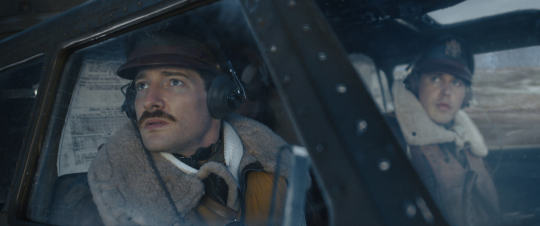
Lt Roy Claytor
Roy Claytor was part of the 350th Squadron. Above, he may be flying as a command pilot in this mission or practice with the Claytor Crew.
He is seen above on the left, beside Cleven.
Major Robert 'Rosie' Rosenthal

Rosie joins the unit in late 1943. He becomes one of the 100th's most reliable pilots.

Rosenthal's Crew:
[Shown left to right; top row than bottom row]
Sgt. Loren Darling - Waist Gunner
Sgt. Michael V. Boccuzzi - Radio Operator/Gunner
Sgt. John H. Shaffer - Waist Gunner
Sgt. Clarence C. Hall - Top turret gunner/engineer
Sgt. William J. DeBlasio - Tail Gunner
Sgt. Ray H. Robinson - Ball Turret Gunner
Lt. Ronald C. Bailey - Navigator
Lt. Robert 'Rosie' Rosenthal - Pilot
Lt. Clifford J. Milburn - Bombardier
Lt. Winifred 'Pappy' Lewis - Copilot
Lt. Curtis Biddick

Lieutenant Curtis Biddick was known as a ‘hard luck’ pilot but was recognised as exceptionally expert and courageous. ‘Every time he went out something seemed to happen,’ said one of his buddies. On one raid he brought his plane back with 1,700 shell and bullet holes in it and two wounded men aboard.
He clashes due to his English colleagues embarking on night-time raids.
Richard Snyder
Biddick's co-pilot and was part of the 418th Bombardment Squadron.
Okay.... So I truly hope this helps going into Masters of the Air tomorrow. I can't wait to see all the bomber boys spread their wings and fly. This tv series is going to be an absolute wreck (in the best way possible). Thank you to everyone who enjoys my posts. Love y'all.
#hbo war#masters of the air#austin butler major gale buck cleven#austin butler masters of the air#callum turner#john egan#barry keoghan#@mads-weasley
95 notes
·
View notes
Text
Happy birthday to Roland!
Today is his -534th birthday!
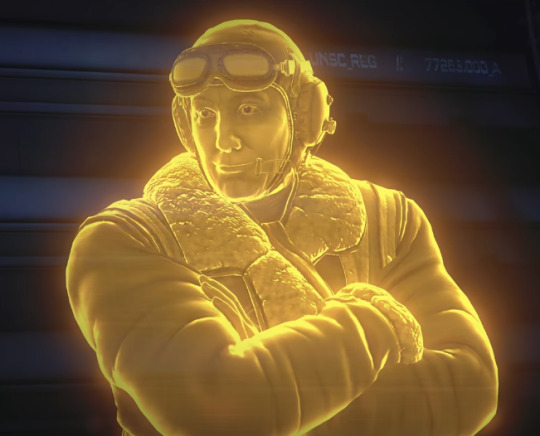
Roland was a "smart" AI assigned to the UNSC Infinity. He was the Infinity's AI during the Requiem campaign, managing the operations both on the ship and on the ground. He was treated like a crew member by Captain Thomas Lasky, providing input and suggestions on the best course of action.
Roland was present when Catherine Halsey was taken into custody on Infinity, and, when he visited her in her cell to lecture her on withholding information, was put under her control by an override code. Roland was able to regain control and order her arrested, but not before she made contact with Jul 'Mdama, whom she wanted to use to get out of UNSC custody and continue her search for the Janus Key.
Roland would oversee the mission to retrieve Halsey and sever the connection with a Forerunner artifact that bound the Infinity to Requiem's surface just as the planet was on a collision course with its sun. Once the connection was severed, he steered the ship off world just before Requiem exploded. Roland continued to serve Infinity after the events on Requiem, and during the pursuit of Dr. Halsey.
During the Created crisis, Roland remained loyal to the UNSC, although he felt sympathy for Cortana and voiced his dismay when Dr. Halsey spoke of terminating her. This mindset mirrored his feelings on "final dispensation" during the sham trial of Iona, an AI who argued for her right to live and not be terminated once she reached her designated seven-year lifespan. Iona was placed in stasis to be studied, and Roland was one of the "judges" who heard her arguments. While he never revealed ONI's intentions, he regretting lying to her. Similarly, he resented what he perceived to be a blithe decision to terminate Cortana once she lost her usefulness to the UNSC.
Because Roland did not join the Created, the Infinity and its crew were able to go into hiding to regroup until the UNSC could cultivate a plan to combat the Created and the Guardians. He also had the authority to officiate marriages, having performed the marriage of Veronica Dare and Edward Buck, though it's unclear if this is something all smart AIs can do, or if Roland acquired the credentials on his own.
Roland was assigned to Infinity when it was attacked by the Banished. His current status is unknown.
In canon (~2560), he is turning 3!
63 notes
·
View notes